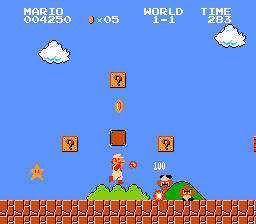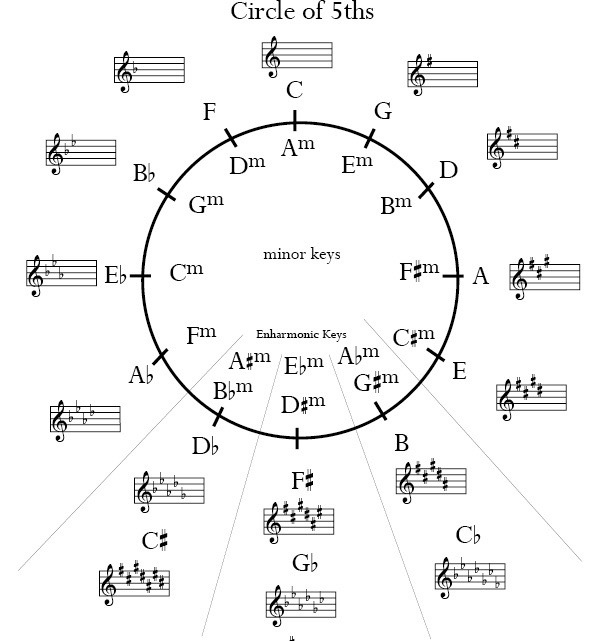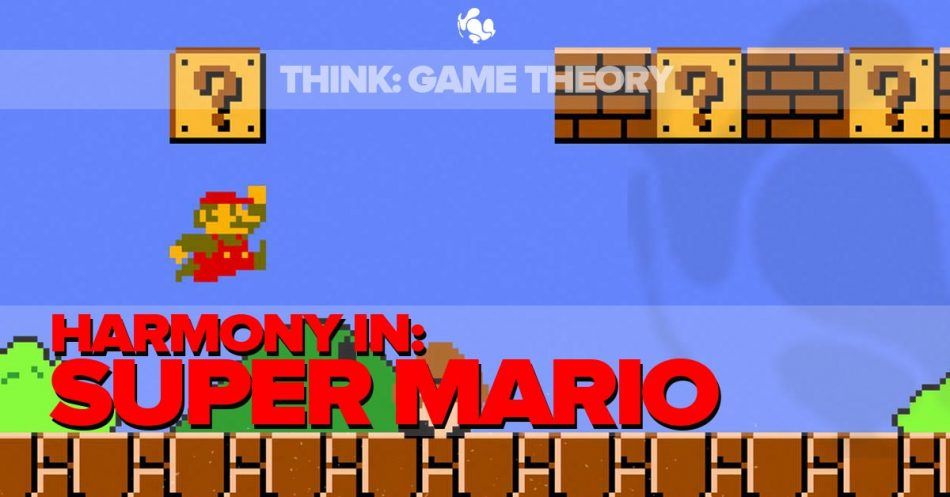I know, catchy title right?
In our previous lessons on composition by examining classic game music, we looked at The Legend of Zelda: Ocarina of Time, and saw what it could teach us about modes, chromatic harmony and form. This time we are learning more about chromatic harmony by looking at a work by the same composer, Koji Kondo, and his theme tune to another classic game, Super Mario Bros.
Actually, this piece begins with some chromatic harmony. The theme tune is in C major, and the first chord of the tune is a D9.

A ninth chord is a dominant seven chord with an added ninth. A D9 chord comprises of D – F# – A – C – E. Remember that the ninth in question is the interval of a ninth added to the root of the chord, not necessarily the ninth of the scale or key (it is the E which is the ninth of the D). Also, it is the third of this chord, the F#, that is the chromatic note, as F# is not in the key of C.
In this context the D9 is a Secondary Dominant chord.
So what is a secondary dominant?
Let’s go over the essential theory first, just so everyone is up to speed. The word dominant can mean two things. First of all, the fifth position of the scale is the dominant position (the seven degrees of the scale have names: tonic, supertonic, mediant, subdominant, dominant, submediant and leading note). Second of all, there is also the dominant seven chord. This is a major triad with a minor seven on top. If you build a chord diatonically (using notes in the key) on the fifth position of the major scale, this is what you get (hence why it is called a dominant seven). Dominant chords are used to set up perfect cadences, which are V – I chord progressions that clearly establish the key. So the word dominant has two meanings: the fifth position of the scale, and a type of seventh chord.
So, a secondary dominant chord is the use of a dominant seven chord on a scale position other than the fifth, which hints at a new key. The D9 in the Super Mario theme is acting as a perfect cadence, hinting at the key of G, as D is the dominant of G. That is why it is called a secondary dominant: it is the dominant of a different key.
As the opening chord progression to this tune is D9 to G, you might think, “Doesn’t this establish the key as G?”. Why do we say it is in C?
This is because a perfect cadence isn’t always enough to establish a new key. It sets up the key, but without any further chord progressions and thematic development in the new key, it isn’t properly established in the mind and ear of the listener. You’ve perhaps strongly suggested it, but that is not always sufficient. After playing a secondary dominant chord, it’s easy to slip back to the original key without setting up a perfect cadence back.
Secondary dominants are commonly used to add colour to the harmony, and don’t necessarily establish a new key. They are most commonly found on the second scale degree (the supertonic position), just like we have here with the Super Mario theme, and the first scale degree (the tonic). This is because they are the dominant chords of the two most closely related keys.
Two keys are said to be closely related when they share most of their notes in common. In the case of C major, the most closely related keys are F major and G major, which begin respectively on the subdominant and dominant position of the scale. F major only has one flat (B flat), and G major only has one sharp (F sharp), so both keys differ from C major by only one note. The dominant chord of F major is C7, which is why secondary dominant chords can be found on the tonic position: they hint at the closely related subdominant key. And of course, this is why they are also commonly found on the supertonic position: because they hint at the closely related dominant key.
Getting yourself acquainted with the circle of fifths can make it easier to work out which keys are more closely related, as you can see the increasing number of sharps and flats in the key signatures the more you move away from whichever key you are in. If you’d like to get a better understanding of harmony, check out our Harmony Courses here.

So now you know how to use them, secondary dominant chords are something that you can pull out of your hypothetical composer’s toolbox (as I like to think about it), any time you want to add some harmonic colour to your compositions.
Another common chromatic chord progression that appears in this theme is something that I talked about in a previous blog about the harmony in The Legend of Zelda: Ocarina of Time, which you can check out here. This is the use of major chords on the flattened sixth and seventh position of the major scale, which in the key of C are the chords A flat major – B flat major – C major. This chord progression is pretty common in rock and pop music, and works like a substitute for a traditional perfect cadence, as it certainly has a sense of resolution to the tonic. So that’s another chromatic chord progression for your composer’s toolbox!
If you enjoyed this lesson, make sure you check out our other blogs, and stay tuned for further lessons. If you’re serious about furthering your knowledge and your career in music, check out our Postgraduate and Premium courses on our website and see which ones are suitable for you. We’re always happy to help, so send us an email at contact@thinkspace.ac.uk with any questions and we’ll get back to you.

